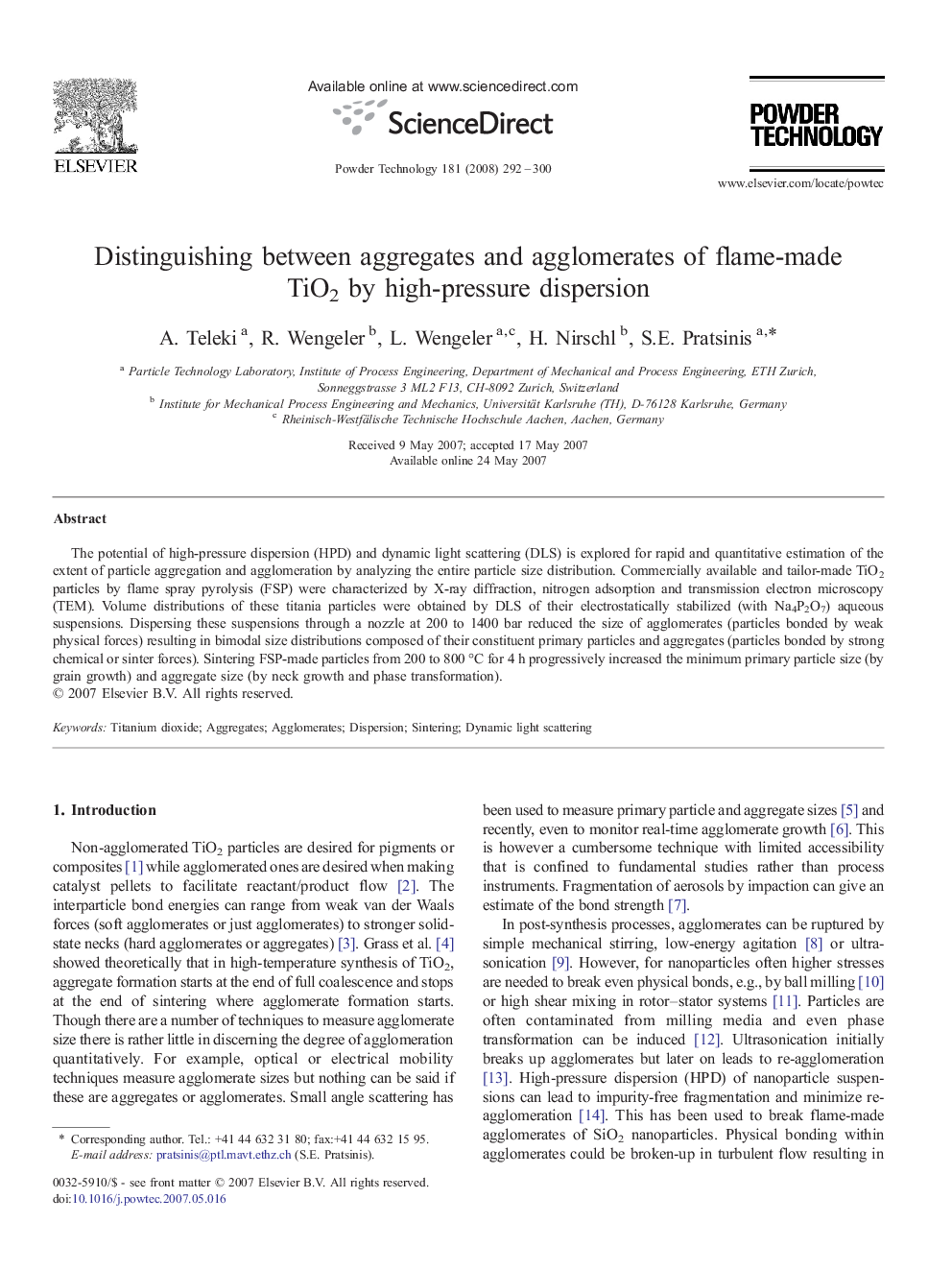| Article ID | Journal | Published Year | Pages | File Type |
|---|---|---|---|---|
| 239243 | Powder Technology | 2008 | 9 Pages |
The potential of high-pressure dispersion (HPD) and dynamic light scattering (DLS) is explored for rapid and quantitative estimation of the extent of particle aggregation and agglomeration by analyzing the entire particle size distribution. Commercially available and tailor-made TiO2 particles by flame spray pyrolysis (FSP) were characterized by X-ray diffraction, nitrogen adsorption and transmission electron microscopy (TEM). Volume distributions of these titania particles were obtained by DLS of their electrostatically stabilized (with Na4P2O7) aqueous suspensions. Dispersing these suspensions through a nozzle at 200 to 1400 bar reduced the size of agglomerates (particles bonded by weak physical forces) resulting in bimodal size distributions composed of their constituent primary particles and aggregates (particles bonded by strong chemical or sinter forces). Sintering FSP-made particles from 200 to 800 °C for 4 h progressively increased the minimum primary particle size (by grain growth) and aggregate size (by neck growth and phase transformation).
Graphical abstractDispersion at increasing pressure drop (up to 1400 bar) of aqueous suspensions of “as-prepared” or sintered (200–800 °C for 4 h) flame-made TiO2 particles and dynamic light scattering was used to quantify their agglomeration. Mass fractions of single primary, aggregated and agglomerated particles are determined by comparing particle size distributions as function of pressure drop to X-ray diffraction and nitrogen adsorption data.Figure optionsDownload full-size imageDownload as PowerPoint slide
